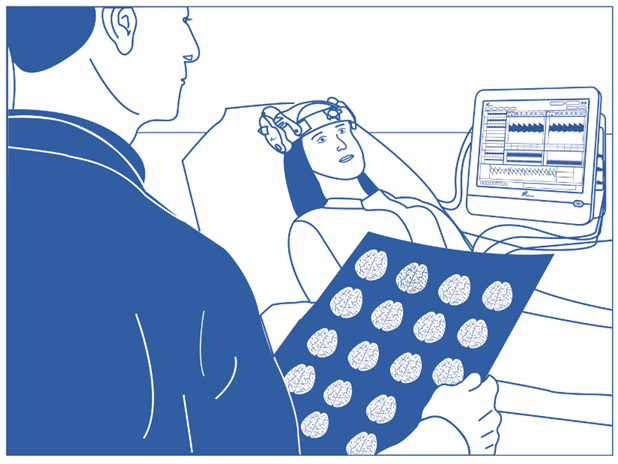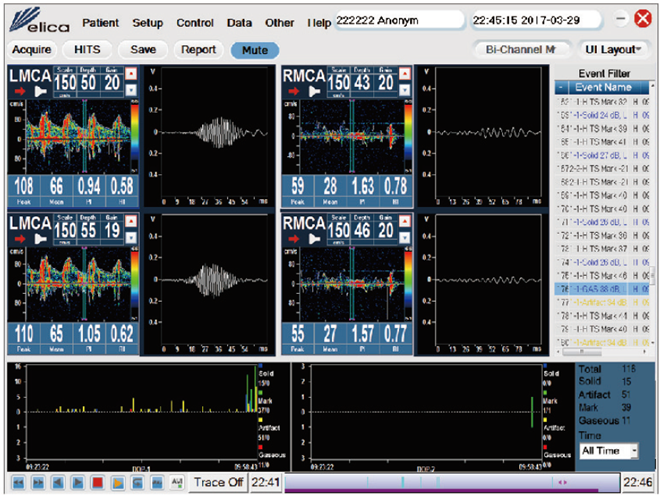Transcranial Doppler and Emboli Detection
A microembolism is a small particle, often a blood clot, which becomes caught while traveling through the bloodstream and can cause blockage in a blood vessel. When many of these occur in in the blood vessels of the brain, they are known as cerebral microemboli[1]. Cerebral embolization underlies the pathogenesis of transient ischemic attacks (TIA) and strokes. The presence of asymptomatic micro-embolic signals (MES) is recognized as an important factor associated with increased stroke risk [2].
Transcranial Doppler ultrasound (TCD) has proven to be a very sensitive tool for detecting emboli in the cerebral circulation. It is convenient, extremely sample for the detection. The presence and rate of MES were assessed by 30 minutes of TCD
monitoring. Bilateral main trunk of the middle cerebral artery segments were insonated at a single depth with 1.6-MHz transducers secured by a probe-holder.
Consensus on MES detection by TCD has been established with the characteristic; MES can be identified as short lasting (<0.01–0.03 s),
Unidirectional intensity increase, and intensity increase (>3 dB) within the Doppler frequency spectrum;
Intensity increase is focused around 1 frequency.
MESs appear randomly within the cardiac cycle and produce a “whistle,” “chirping,” or “clicking” sound when passing through the sample volume[3].

Delica TCD for the Emboli Detection
The analysis for recognition of the emboli is one of the main strengths of the Delica TCD.
-With an advanced Emboli Detection software
-Intelligent HITS analysis and HITS count function.
-Soundtrack and HITS history review
-Multi-Depth display, power M mode and improved algorithm for automatically identifies the artifacts.

Reference:
[1]Quotes from “Cedars Sinai”
[2]R. W. M. KEUNEN ”Introduction of an embolus detection system based on analysis of the transcranial Doppler audio-signal” Journal of Medical Engineering & Technology, Vol. 32, No. 4, July/August 2008, 296 – 30
[3]Vlasta Vukovic-Cvetkovi ´ c “Microembolus Detection by Transcranial Doppler Sonography: Review of the Literature” Volume 2012, Article ID 382361
- Improved perioperative neurological monitoring of coronary artery bypass graft patients reduces the incidence of postoperatiImproved perioperative neurological monitoring of coronary artery bypass graft patients reduces the incidence of postoperati
- Introduction of an embolus Detection System based on analysis of the transcranial doppler audio-signalIntroduction of an embolus Detection System based on analysis of the transcranial doppler audio-signal
- Exploration of a zero-tolerance regime on cerebral embolism in symptomatic carotid artery diseaseExploration of a zero-tolerance regime on cerebral embolism in symptomatic carotid artery disease
- Impact of the Haga Braincare strategy on the burden of hameodynamic and embolic strokes related to cardiac surgeryImpact of the Haga Braincare strategy on the burden of hameodynamic and embolic strokes related to cardiac surgery